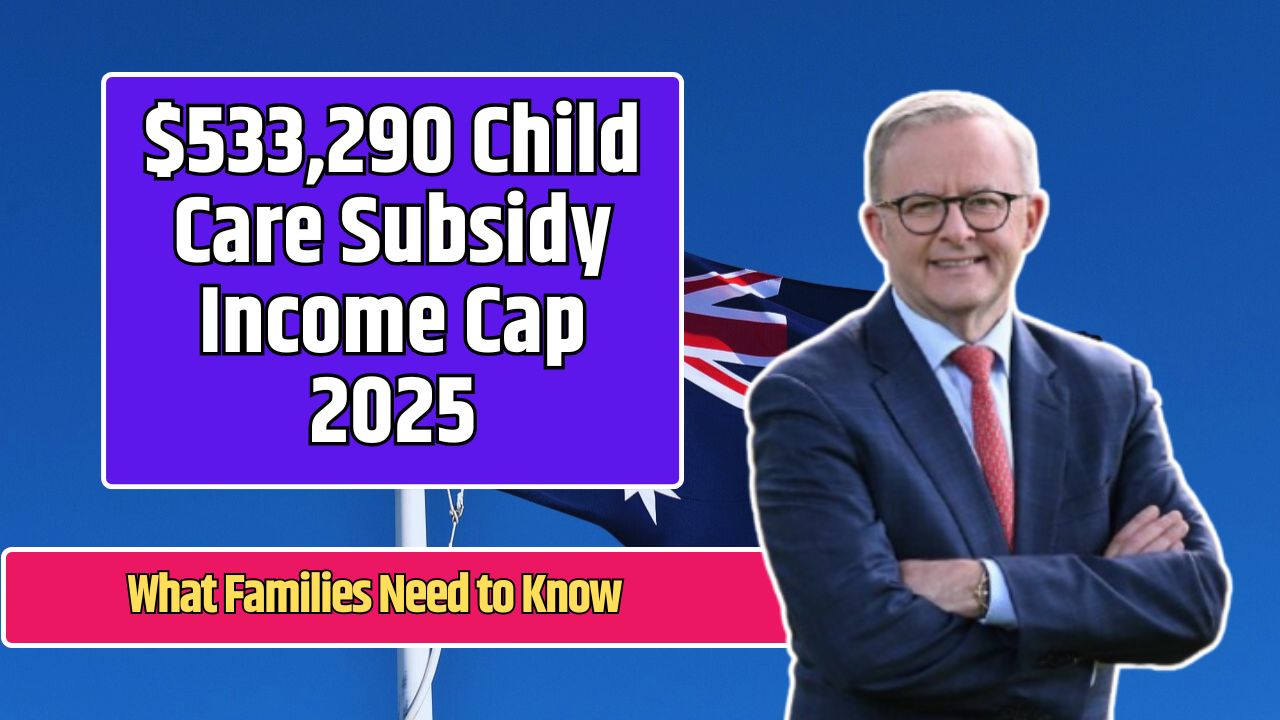Join on WhatsApp
Get the latest updates directly on WhatsApp – motivation, news & more!
Child care remains one of the biggest costs for Australian families—and in 2025, the federal government is setting clearer boundaries on who gets help. From this year, families with a combined annual income of up to $533,290 will remain eligible for the Child Care Subsidy (CCS), the flagship program designed to make early childhood education more affordable.
For households already navigating steep rent, mortgage repayments, and grocery bills, understanding this income cap is crucial for budgeting.
What the $533,290 Income Cap Means
The new ceiling doesn’t mean every family below it will receive the same benefit. Instead, the subsidy gradually tapers as income rises, ensuring more support for low- and middle-income households.
- Families earning below $80,000 may receive up to 90% of their childcare fees covered, capped at the government’s hourly rate.
- As income increases, the subsidy percentage declines in a sliding scale until it reaches zero once income exceeds $533,290.
- Above $533,290, no CCS applies, meaning parents are responsible for the full childcare bill.
This cap is assessed annually, using the previous financial year’s combined parental income reported to Centrelink via Services Australia.
Key Factors That Influence CCS
Apart from income, several other factors determine how much subsidy a family receives:
- Type of care – Long day care, family day care, outside school hours care, or in-home care each have different hourly rate caps.
- Hours of recognised activity – The number of hours parents spend in work, study, volunteering, or training dictates how many hours of subsidised childcare they can access.
- Child’s age – Different hourly caps apply depending on whether a child is under or over school age.
Why the Cap Matters
For families earning just under the $533,290 threshold, CCS can still shave thousands off annual childcare bills. For example:
| Family Income | Approx. Subsidy % | CCS Hourly Cap (long day care, under 6) | Potential Saving* |
|---|---|---|---|
| $70,000 | 90% | $13.73/hr | ~$18,000/year |
| $150,000 | ~70% | $13.73/hr | ~$14,000/year |
| $300,000 | ~50% | $13.73/hr | ~$9,000/year |
| $500,000 | ~10% | $13.73/hr | ~$2,000/year |
| $540,000 | 0% | N/A | $0 |
*Estimates based on 40 hours per week per child; actual savings vary.
The gradual tapering prevents “benefit cliffs” where families suddenly lose the subsidy after crossing a small income margin.
How to Secure the Subsidy
- Keep income estimates accurate: If your income changes during the year, update it in MyGov or the Centrelink app to avoid overpayments or debts later.
- Provide activity details: Ensure Centrelink has records of work, study, or volunteering to access maximum hours.
- Choose approved providers: Only care services approved by the government qualify for CCS.
Key Takeaways
- The CCS income cap is $533,290 per household from 2025.
- Families below this threshold receive subsidies on a sliding scale.
- The percentage depends on income, hours of recognised activity, child’s age, and type of care.
- Income reporting to Centrelink is vital to avoid payment errors.
- CCS continues to be one of the most significant supports for household budgets.
FAQs
What is the new CCS income limit in 2025?
$533,290 combined household income. Families above this will not receive any subsidy.
Do I need to apply separately for the subsidy each year?
No. Once approved, CCS continues as long as you remain eligible, though you must update your income and activity details.




